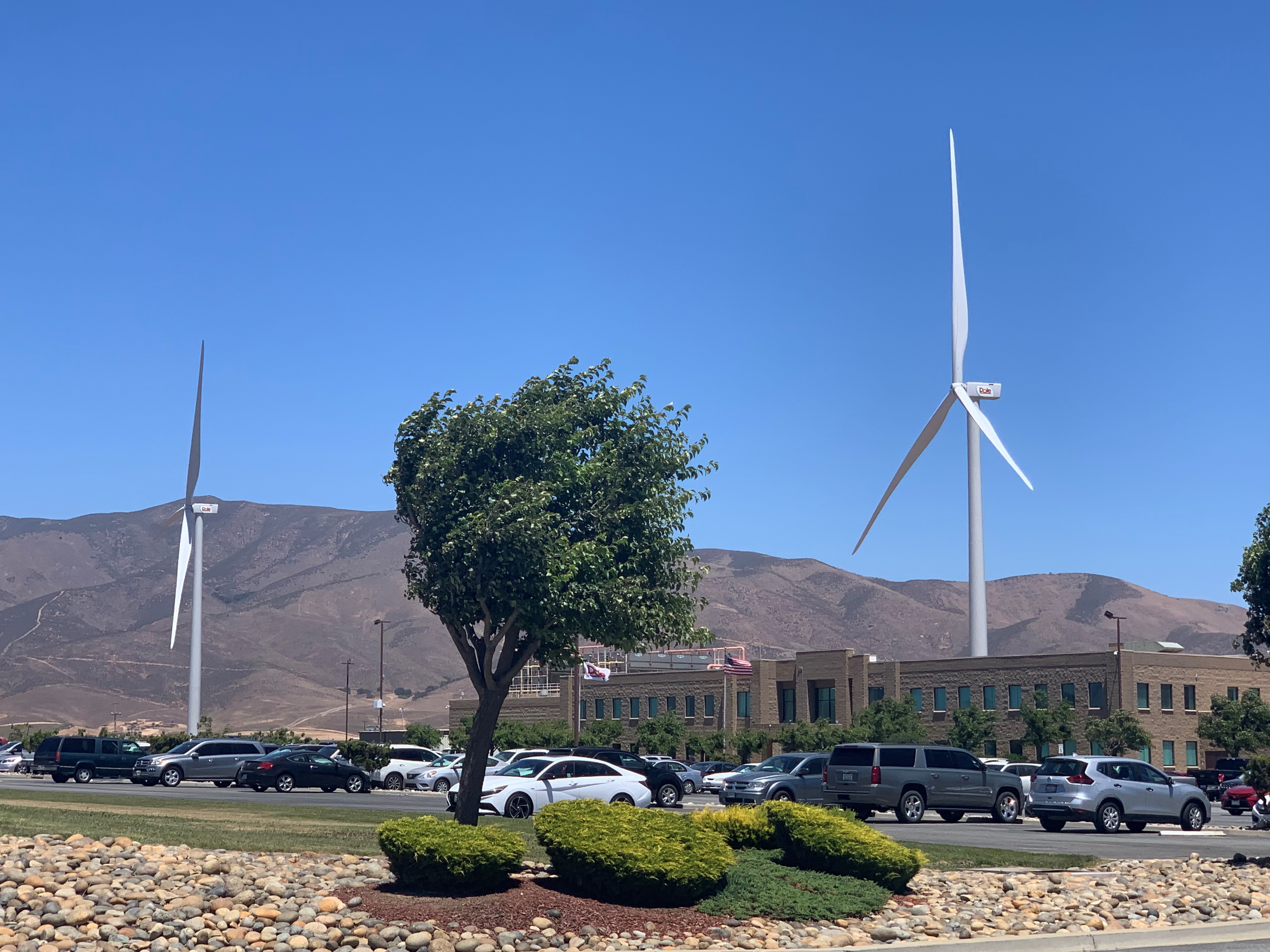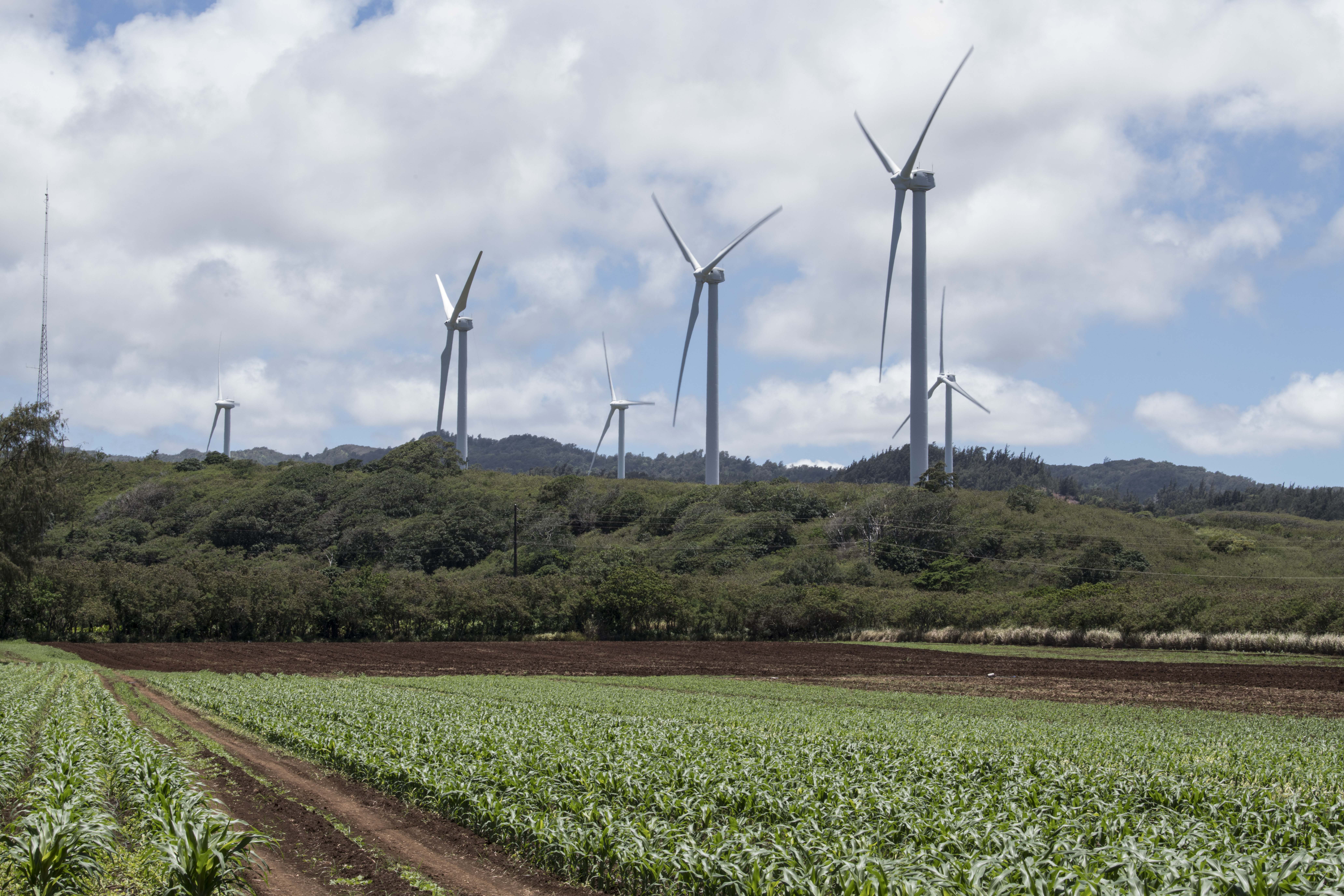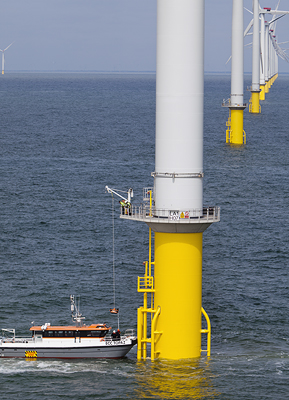Types of Wind Energy
What Are the Different Types and Applications of Wind Energy?
Wind turbines provide electricity that can either be used at the site where it’s generated or transferred to the electrical grid. Typically, the size of a turbine determines how much energy it can produce, although technology is improving to increase turbines’ efficiency.
The term “distributed wind energy” (sometimes called “onsite wind energy”) refers to turbines installed locally to meet nearby energy needs. Distributed wind energy installations are typically used by a community, company, utility, or homeowner to power their specific needs.
The term “utility-scale” refers to typically large turbines installed either on land or in water that are used to generate large amounts of electricity to feed into the three major electrical grids in the United States (Eastern, Western, and Texas’s grid).
Regardless of size, wind energy projects connected to the electrical grid require utility approvals and sometimes grid impact studies before construction can begin, along with other permitting and zoning requirements and regulations.
Plants that combine multiple forms of energy are called hybrid power plants. For example, wind turbines and solar power technologies, as well as energy storage devices, can complement each other in what is commonly known as hybrid renewable energy systems. These systems combine different renewable energy sources to enhance overall efficiency, reliability, and energy output. The combination of wind and solar power is one of the most popular hybrid configurations.
Read a summary below or learn more about the three kinds of wind energy and our guides.
Back to topDistributed Wind Energy

Distributed wind turbines can help provide on-site electricity to homes, farms, or communities. Photo from Foundation Windpower, LLC
Distributed wind energy describes wind energy projects that serve on-site energy demand. As such, distributed wind turbines can generate on-site electricity for homes, schools, businesses, and farms. Sometimes distributed wind projects support local electricity networks, which are often called “microgrids.” They can help cut down on electricity use and, in some cases, can provide all the power for homes and other structures that are off the grid. Distributed wind turbines can also work together with other technologies like solar panels, storage, and power converters to provide power.
Distributed wind energy installations are defined by how they are applied (to serve on-site energy demand) rather than by turbine size. However, turbines used for distributed applications are typically smaller than 20 megawatts. Distributed wind turbines installed near homes are usually between 1 and 10 kilowatts, but they can be significantly bigger. Individual or small clusters of megawatt-scale wind turbines can be used to power commercial and industrial facilities, agricultural uses (farms or ranches), community facilities (such as schools, office buildings, or part of a campus), public campuses (such as a college or hospital), and isolated grids (such as small island, remote, or tribal communities). Read 10 things you didn’t know about distributed wind energy.
Learn how wind power can provide you with energy, how to install a wind turbine on your land, the details of small community or large community wind power projects, and how community agreements can benefit those living near wind farms.
Land-Based Wind Energy

Utility-scale land-based wind turbines range in size from 100 kilowatts to as large as several megawatts. Photo by Dennis Schroeder, National Renewable Energy Laboratory
Land-based, utility-scale wind energy projects use highly efficient, state-of-the-art wind turbines that generate cost-competitive electricity at power-plant scales. They can be owned and run by a utility company that then sells the power the plant makes to users, like homeowners, who connect to the electrical grid. Read 10 things you didn’t know about land-based wind energy.
These projects use large, land-based turbines that can have blade rotors measuring more than 75 meters in diameter, which is about the size of an average Ferris wheel. The rotors are installed on towers that can be taller than the Statue of Liberty.
Because of their size and the scale of the installations, utility-scale wind turbines require environmental, utility, governmental, and public coordination and they are regulated in their location, distance from nearby infrastructure (called "setback"), and other health, safety, and environmental aspects.
Offshore Wind Energy

Most offshore wind turbines are taller than the Statue of Liberty, allowing them to produce vast amounts of energy by capturing powerful winds above the ocean. Photo from Siemens AG
Offshore wind energy, the newest application for wind energy, refers to utility-scale wind energy projects that capture wind resources over bodies of water. Read 10 things you didn’t know about offshore wind energy.
In water depths less than 60 meters, offshore wind turbines can be fixed directly to the bottom of the ocean, known as fixed-bottom offshore wind turbines, using foundations that can be different shapes and installed in different ways, like monopiles—single stems on which a turbine tower is attached, pictured, that are pounded into the seafloor by pile drivers.
As the newest application of wind energy, the industry, academics, government, and other stakeholders are working together to establish best practices, safety standards, technologies, marine wildlife impacts, ocean co-use (such as coordinating with fishing industries), and other aspects these water-based wind farms.
In water depths greater than 60 meters, floating offshore wind turbines are needed, which are tethered to the seafloor with long mooring lines and anchors, like boats moored in a harbor. There are several different kinds of floating offshore wind turbines, and research continues to investigate the best way to design, build, and situate these turbines in the ocean. Researchers are also looking into the potential to harness winds blowing in the middle of large lakes, like the U.S. Great Lakes, with offshore wind turbines.
Offshore wind turbines have different regulations and must consider impacts to wildlife and the environment, skylines (called “viewshed”), other uses of the ocean space (such as fishing). Because they are more remote, these turbines can be taller than land-based turbines, meaning they have the potential to harness more energy from the strong winds blowing off U.S. coastlines, which can then power offshore activities or be sent to shore via underwater cables to power homes, schools, and other electric needs.
Energía Eólica en Latinoamérica
Aprender sobre el estado y el crecimiento de la energía eólica en América Latina a Tethys.Learn More
Learn more about wind energy basics on the Wind Energy Technologies Office website.
Sign up for the WINDExchange newsletter to get the latest in wind energy research, development, deployment, and more.
Back to top